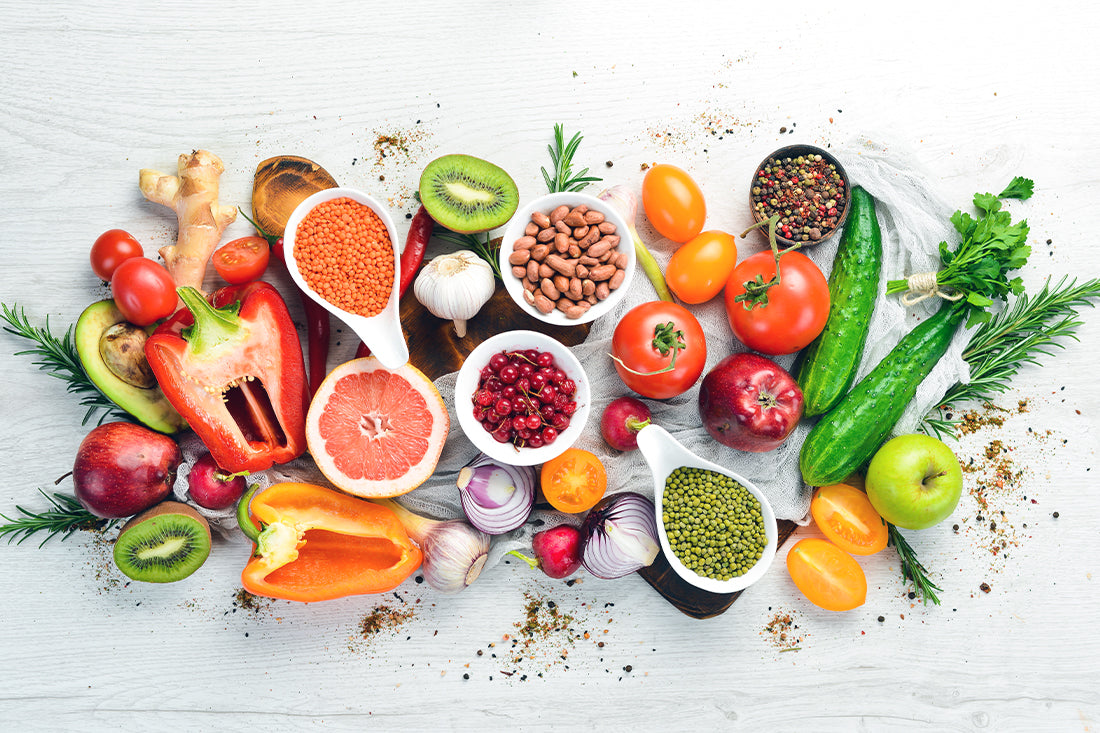If you've ever felt bloated, sluggish, or just a little “off” after meals, your gut might be trying to tell you something. Many of us think eating healthy means sticking to salads or cutting out sweets—but it turns out that adding more variety to your meals might be the real key. That’s where the 30 plant foods challenge comes in.
This fun and eye-opening challenge is all about eating 30 different plant-based foods each week. Yes, 30! It may sound like a lot, but once you understand how it works, you’ll see it’s easier—and tastier—than you think.
Let’s break it down and explore how eating a wide variety of plants each week can help support your gut and overall well-being.
What Is the 30 Plant Foods Challenge?
The idea comes from the American Gut Project, one of the largest studies on gut health. Researchers found that people who ate 30 different plant foods per week had a more diverse range of gut bacteria than those who ate fewer than 10.
Why does this matter? A diverse gut microbiome helps your body process food more easily, supports your energy levels, and can even affect your mood. Variety isn’t just the spice of life—it’s the secret ingredient your gut may be craving.
What Counts Toward the 30?
Good news: this challenge isn’t just about leafy greens (though those count too). Here’s what goes into your weekly plant count:
- Fruits
- Vegetables
- Whole grains
- Legumes (beans, lentils, chickpeas)
- Nuts and seeds
- Herbs and spices
Every unique plant you eat counts as one point. So, for example, spinach, kale, and romaine lettuce would each earn you a point. A handful of almonds? One point. Add in some pumpkin seeds? Another point.
Frozen and dried plant-based foods count too, so don’t worry if you don’t always buy fresh.
Why Variety Matters for Your Gut
When you eat a wide variety of plant-based foods, you’re feeding many different types of gut bacteria. These friendly microbes each like different kinds of fiber and nutrients. Just like us, they don’t want to eat the same thing every day.
Different plant types offer different kinds of fiber, natural compounds, and nutrients that help keep your gut balanced. It’s not about eating more of the same "superfood," but about mixing it up and getting a full range of plant power.
Simple Ways to Hit 30 Plant Foods a Week
Let’s be honest—30 sounds like a lot at first. But with a few easy swaps and meal ideas, you can hit your goal without making big changes.
- Start with Breakfast
- Add chia seeds, flaxseeds, or walnuts to oatmeal
- Mix in a variety of berries—blueberries, strawberries, raspberries
- Sprinkle cinnamon or nutmeg for flavor (herbs and spices count too!)
That’s 5–6 plants in just one bowl!
- Mix Up Your Grains
Instead of just rice or wheat, try:
- Quinoa
- Buckwheat
- Barley
- Farro
- Millet
Each grain adds a new point to your weekly plant count.
- Go Big on Veggies
Try making meals that feature 4–5 different veggies:
- Stir-fries
- Roasted veggie trays
- Soups and stews
Use frozen vegetables for convenience—they’re just as nutritious.
- Snack Smarter
Trade chips for:
- A mix of nuts and seeds (almonds, cashews, sunflower seeds, pumpkin seeds)
- Dried fruit (figs, raisins, apricots)
- Raw veggies with hummus
Each ingredient gets you closer to your 30.
- Spice It Up
Herbs and spices do more than flavor your food—they count toward your total!
- Basil
- Cilantro
- Parsley
- Turmeric
- Ginger
Keep a small herb garden or stock up on dried blends.
Make It a Fun Weekly Game
The 30 plant foods challenge doesn’t have to feel like a diet or rulebook. Think of it as a game:
- Keep a running list of what you eat
- Try a new plant food every week
- Challenge your family or friends to join you
It’s a fun way to discover foods you might never have tried before and help maintain your gut’s natural balance at the same time.
You could even set up a chart on your fridge or use a tracking app. You’ll be surprised how quickly your count adds up.
Frequently Asked Questions
Do different colors of the same plant count as separate foods?
No—red and green apples, for example, still count as one plant. It’s about the type, not the variety.
Can cooked and raw versions both count?
Only once per plant type. Whether it’s raw spinach in your salad or sautéed in your dinner, it counts as one.
What about plant-based snacks?
Yes, if they’re made with whole ingredients. For example, lentil chips or roasted chickpeas can count, depending on how they’re made.
Final Thoughts
Trying the 30 plant foods challenge is a simple and tasty way to help your gut feel more balanced and supported. By eating a wide variety of plant foods—from fruits and vegetables to herbs and seeds—you’re giving your body a broader range of nutrients and feeding the friendly bacteria in your gut.
And the best part? You don’t need to follow a strict plan or cut out your favorite foods. Just start adding more colors, textures, and flavors to your plate. A handful of herbs here, a scoop of grains there—and you’re on your way to hitting 30 without even realizing it.
Next time you're at the store, grab something new. Your gut might just thank you with more energy, fewer discomforts, and a little extra bounce in your step.






